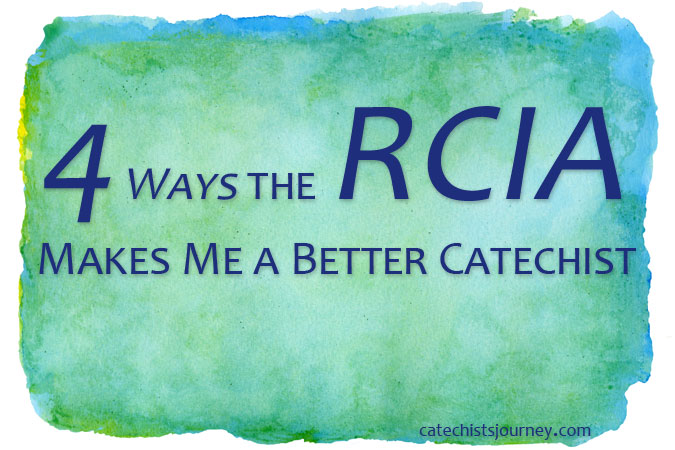
When I started out as a catechist, I began with my parish’s Rite of Christian Initiation of Adults (RCIA) ministry. A few years later I joined the faith formation team that served our parish’s young people, first as a substitute, then as a regular catechist.
I continue to serve in both ministries, and while teaching the faith to candidates in the RCIA is different from teaching it to young people (For example, candidates in the RCIA are older, more mature, have different needs, and generally want to be in class.), the lessons I have learned from being a catechist in the RCIA can be applied to my role as a catechist for young people. Here are a few ways the RCIA makes me a better catechist:
1. Assume the best.
The adults I teach in the RCIA have to juggle jobs, family, and faith. And while there are conflicts, I always assume that they are serious about their faith. Thus, when conflicts arise, I will work with the candidates and catechumens to find solutions that, while not perfect, will work for everyone. This assumption works with young people too. They have many responsibilities to juggle, and even if they may not want to be in class on a particular night, I believe they sincerely want to find a way to relate to God. The task for me is to find a way to help them see how the Catholic faith helps them find God in their everyday lives.
2. Break open the Word.
I begin each RCIA class by breaking open the Gospel reading from the previous Sunday. A volunteer or I will read the Gospel, and then we will discuss three questions: What did you hear? What does it mean to you? What difference does it make? I do the same at the beginning of each of my lessons when I am teaching young people. I will read the Gospel reading from the previous Sunday. Since I am more pressed for time in faith-formation sessions than I am with RCIA classes, I will only ask young people to state one thing they heard from the reading. I try to work what they’ve said into the lesson.
3. Celebrate.
One of the things I loved about my experience going through the RCIA was the rites themselves, particularly the Rite of Welcoming the Candidates and the Call to Continuing Conversion. These celebrations made me feel special—I felt that I was personally called by Christ to become part of his Church. Afterward, I spent time talking about my experience with my catechists and my sponsor. When my faith-formation classes attend a parish celebration, such as a communal celebration of the Sacrament of Penance and Reconciliation, we gather and talk about the experience. I ask them if there was anything special that they noticed or if there were any questions that came up that they need answered.
4. Offer blessings.
The RCIA includes many optional blessings that can be interspersed throughout the process. I appreciate these blessings. The process is not an easy one, and those blessings gave me strength to carry on when I wanted to give up. The young people in my faith-formation classes need God’s strength too. So every now and then, as a closing prayer, offer a blessing. You can make up a blessing of your own, or use this one: Lord, look upon these young people as they deepen their understanding of the Gospel. Let them grow stronger in faith, hope, and love. We ask this through Christ, our Lord. Amen.
How does serving in another ministry make you a better catechist? What lessons from other ministries in which you serve can you bring into your classroom?




Bob bless you as you continue yours and lead 0thers on their faith journey